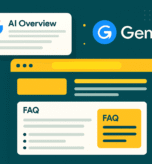Creating random blog posts may no longer work in today’s SEO world. To rank higher, websites now follow a strategy called content clustering where a main pillar page connects to several related posts, known as cluster pages, through proper internal linking. This structure, also called a topic cluster, not only improves user experience but also builds topical authority. Add keyword clustering into the mix, and your content can target multiple related search terms with one clear plan.
What Is Content Clustering?
Content clustering also known as a topic cluster strategy is a smart way to organize your website’s content. Instead of writing random blog posts, you create a system where one pillar page focuses on a broad topic, and several related cluster pages go deeper into specific subtopics. All of these pages are connected through strong internal linking. Think of the pillar page as the main guide. It gives an overview of the subject, while the cluster pages cover each detail, like answering related questions or exploring specific areas.
This structure helps both users and search engines:
- For users, it makes navigation easy and keeps content organized.
- For search engines like Google, it shows clear topical relationships, which improves crawling and boosts your topical authority.
What Is Keyword Clustering and How It Supports Content Clustering?
Keyword clustering is an SEO practice where you group together search terms that share the same search intent and semantic relevance. Instead of targeting single keywords across many pages, you gather related terms like “best CRM software,” “top CRM tools,” and “best CRM systems” into one logical group. That way, one page can target the whole cluster instead of splitting attention and rank potential across multiple pages.
Why Keyword Clustering Matters
- It reduces keyword cannibalization by consolidating related queries into one strong, focused page.
- It improves content relevance and helps Google understand your page’s context.
- By targeting multiple related terms, you can attract broader search volume with one piece of content.
How It Fuels Content Clustering
- You create a pillar page around a core keyword cluster covering the main topic broadly.
- You build supporting cluster pages that focus on sub-clusters more specific related queries.
- Use internal linking between the pillar and cluster pages to reinforce structure and topical connections.
How Is Keyword Clustering Different from Content Clustering?
Though they sound similar, keyword clustering and content clustering serve different but related roles in SEO.
- Keyword clustering is the process of grouping keywords that have similar search intent or meaning. For example, “Best SEO tools” and “top SEO software” can go into one cluster because they point to the same topic.
- Content clustering, on the other hand, is how you structure your content based on these keyword groups. You build a pillar page for the main theme and then create cluster pages around the keyword groups you’ve identified.
When used together:
- Keyword clustering helps with planning your blog content by targeting a group of related terms.
- Content clustering helps with organizing that content in a user-friendly and SEO-friendly structure.
Why Content Clustering Boosts Rankings?
If you’re trying to improve your website’s visibility on search engines, content clustering is one of the most effective strategies you can use today. Here’s why this approach works so well:
1. It Builds Topical Authority
Search engines like Google prefer websites that show depth and expertise in a subject. When you create a topic cluster on a main pillar page supported by related cluster pages you’re telling Google that you cover the topic completely. With smart internal linking, your content becomes easier to understand and crawl, helping you earn more visibility over time.
This strong content structure helps you build topical authority, which means search engines start trusting your site more for that subject.
2. It Helps You Rank for More Keywords
A well-planned content cluster can rank for dozens (or even hundreds) of related search terms. By using keyword clustering, you group similar keywords and create content that targets them all together. This means you’re not just optimizing for one keyword—you’re capturing multiple search queries at once.
For example, a page about “content clustering” can also rank for:
- “what is a topic cluster”
- “how pillar pages work”
- “internal linking for SEO”
- and more—all from one well-structured cluster.
3. It Improves User Experience
Good SEO isn’t just about search engines, it’s also about people. A content cluster gives your readers a clear path to explore related content. They can start with a pillar page for an overview, then dive into cluster pages for deeper knowledge. This keeps visitors on your site longer, reduces bounce rates, and increases engagement.
4. It Reduces Keyword Cannibalization
Keyword cannibalization happens when multiple pages on your site target the same keyword. Instead of helping you rank better, it confuses search engines and weakens your SEO. But with content clustering, each cluster page focuses on a different part of the topic and its own target keyword.
This way, every page has a unique purpose and supports your overall strategy without overlapping.
How to Build Your Content Cluster Strategy
If you want to improve your rankings and grow organic traffic, building a proper content cluster strategy is a smart step. Here’s how you can do it, even if you’re just getting started.
1. Start with Keyword Research & Keyword Clustering
The first step is finding the right keywords. Use tools like Semrush or Ahrefs to discover high-intent and long-tail keywords related to your niche.
- Group these keywords into clusters based on similar search intent.
- Use keyword clustering to organize related terms that can rank together.
- Check the keyword difficulty (KD) of each term. Use a mix of low-KD (easy to rank) keywords for quick wins, and higher-KD keywords to build long-term authority.
- You can cluster keywords manually or use tools that group them by how search results overlap (SERP-based clustering).
2. Choose a Pillar Page Topic
Now that you have your keyword clusters, it’s time to choose a strong pillar page topic.
- A pillar page should cover a broad topic (like “content clustering”) in depth.
- It acts as the main hub for a specific topic cluster and links to several related cluster pages.
- Choose a topic that represents the core of what you want to be known for in search results.
3. Create Cluster Pages Around Related Subtopics
Once your pillar page is planned, create supporting cluster pages for related subtopics.
- Each cluster page should cover one specific keyword group (for example: “keyword clustering tools” or “how to do internal linking for SEO”).
- Make sure each page is unique, informative, and optimized for its specific keyword cluster.
- Always match the search intent to answer what the user is looking for.
Together, these cluster pages build out your topic in depth and give you more chances to appear in search results.
4. Use Smart Internal Linking
Link your cluster pages back to the main pillar page, and link related cluster pages to each other.
- This creates a clear internal linking structure that helps both users and search engines.
- It improves navigation and tells Google how your content is connected.
- A strong linking structure reinforces your site’s topic cluster and can boost rankings.
5. Optimize Content for Search Intent
Finally, make sure all your content is SEO-friendly:
- Use your primary and related keywords naturally—don’t overuse them.
- Structure your content clearly with headings, lists, short paragraphs, and examples.
- Match the search intent: is your reader looking for a guide, a product, a tool, or a definition?
This ensures that your content not only ranks well but also provides real value to the reader.
Tips & Best Practices for Effective Content Clustering
1. One Intent = One Cluster = One Page
Always make sure each page in your cluster has a clear purpose. Don’t try to cover too many different topics in one place. For example:
- One pillar page should focus on the broad topic (like “content clustering”).
- Each cluster page should answer one related question or target one sub-topic (like “tools for keyword clustering” or “internal linking best practices”).
This keeps your structure clean, avoids content overlap, and helps with both user experience and SEO.
2. Track Performance Over Time
Creating a content cluster is not a one-time job. Once it’s live, keep an eye on how it performs:
- Check your search rankings for target keywords.
- Track organic traffic to both pillar and cluster pages.
- Measure dwell time and bounce rate to understand how users interact with your content.
Use tools like Google Analytics, Google Search Console, or Semrush to monitor your SEO metrics.
3. Update and Expand Your Clusters Regularly
SEO changes fast and so do user needs. Keep your content cluster fresh by:
- Updating stats and examples in your pillar page.
- Adding new cluster pages as you discover more related topics.
- Improving internal linking when you publish new content.
Refreshing your content regularly helps maintain your topical authority and gives search engines a reason to keep ranking you.
4. Balance High-KD and Low-KD Keywords
Don’t only go after highly competitive keywords. Mix both:
- Low KD (keyword difficulty) keywords: Easier to rank, great for building momentum.
- High KD keywords: Tougher to rank for, but useful for long-term authority.
For example, if “content clustering” is high KD, start by creating cluster pages around lower KD topics like “how to do internal linking” or “best keyword clustering tools.” These pages can support your main pillar and help build your site’s overall strength.
Conclusion
Content clustering is one of the most effective SEO strategies today. By building a strong pillar page and connecting it with helpful cluster pages, you create a well-organized topic cluster that’s easy for both users and search engines to understand. Pairing this structure with keyword clustering allows you to target multiple related keywords without creating duplicate or confusing content. You also avoid keyword cannibalization, improve topical depth, and increase your chances of ranking for a wide set of relevant search queries.
Start small:
Pick a broad topic. Create a detailed pillar page. Then build cluster pages around specific questions or related keywords. Use smart internal linking to connect everything together.
This structure not only improves your SEO rankings, but it also makes your content more valuable and easier to explore for your audience.
In short, when you organize your content the right way, your website becomes more helpful, more powerful—and more visible in search results.




